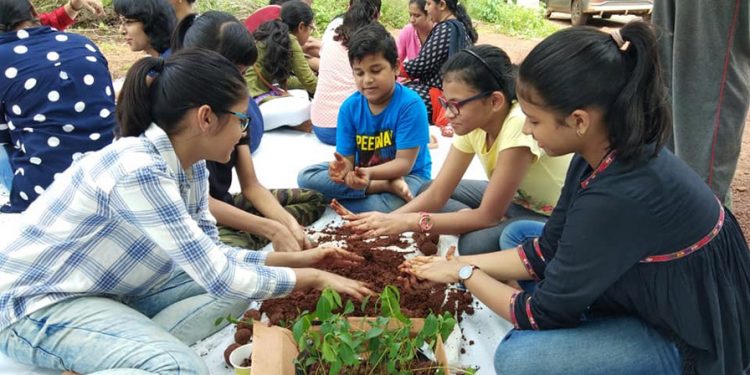Governments across the world pump huge funds into plantation schemes to address the issue of global warming. Though this has been going on for years, the result is far from satisfactory thanks to the lack of proper care of the saplings. Besides, mindless construction and road expansion projects in the name of modernisation have only made matters worse with trees becoming silent victims. However, nature lovers are now propagating a unique technique to address the issue – embedding seed balls in the ground which germinate and grow into trees. Across the country, this effort is being spearheaded by a squadron of young people. Mumbai-based Dharmendra Kar from Odisha is one of them.
“I am a data scientist, but at heart I am a member of a green army,” says Dharmendra. For the last two decades, he has been working tirelessly to protect the environment in Mumbai, where he works, and Jajpur, his birthplace. He is a leading light of the seed ball movement in Odisha.
Dharmendra says, “While discussing environmental issues with a friend a couple of years ago, I recalled a story about how a fruit was eaten and its seed thrown on the ground. It went on to become a sturdy plant and that too without being taken care of. This gave me the idea of throwing seeds in different places such as barren patches, hilly areas and alongside National Highways. In dry areas, due to water scarcity, plantation projects often fail. I felt that if a seed can become a plant without nourishment, much can happen if it is offered proper nourishment in the form of soil and manure. No one plants trees on the hills. They grow on their own. Anything that grows naturally needs no nurturing. After much thought, we came up with this idea of seed ball.”
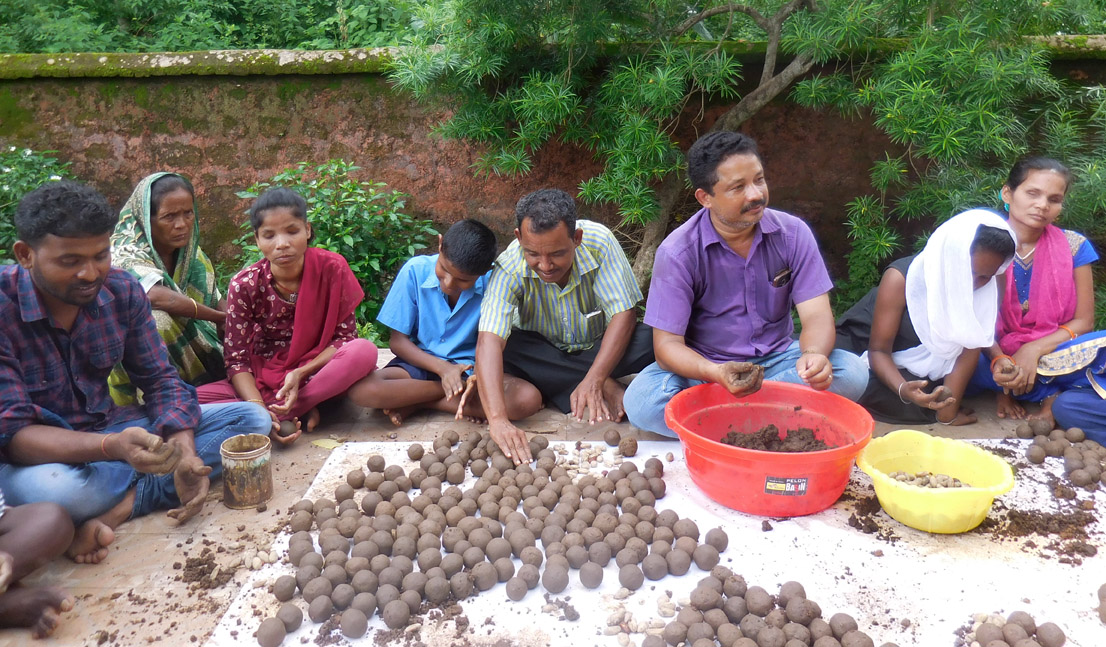
Although the seed ball concept was introduced by Masanobu Fukuoka of Japan, famous for popularising natural farming, Dharmendra popularised the concept in Odisha at a time when the state was in search of ways to combat the deforestation caused by cyclone Fani.
Dharmendra explains, “I was born and brought up in Odisha. Though I reside in Mumbai now, I frequently visit my hometown where I plant saplings on a regular basis… which is why my village has not lost its greenery even after being hit by the cyclone. More than 10 million trees were uprooted, and an equal number of trees got damaged in the cyclone along the Bhubaneswar-Puri highway and roads in Brahmagiri, Satapada, Krushnaprasad, Bhubaneswar, Cuttack, Khurda and several other areas. The green cover at Balukhanda sanctuary was also hit. Following the cyclone, I thought it is high time I played my part in enhancing greenery.”
After watching the Hrithik Roshan starrer Super-30, Dharmendra selected 30 individuals from 30 districts of Odisha who work passionately for the environment without the patronage of any NGO. He then conducted a workshop on seed ball making. Following the workshop, the seed ball movement gained so much popularity that homemakers have also started using their free time to make seed balls and throw them on bare patches. The advantage of a seed ball is that it can grow into a tree without much care, Dharmendra says.
The green warrior visits areas where plantation is difficult. He tosses seed balls there so that the seeds may sprout and grow after rain. Every day, he spends two hours in the morning for the purpose. “I have noticed that students are more concerned about the environment as compared to elderly people. So, I hold workshops for kids to teach them to make seed balls and throw them in the ground.”
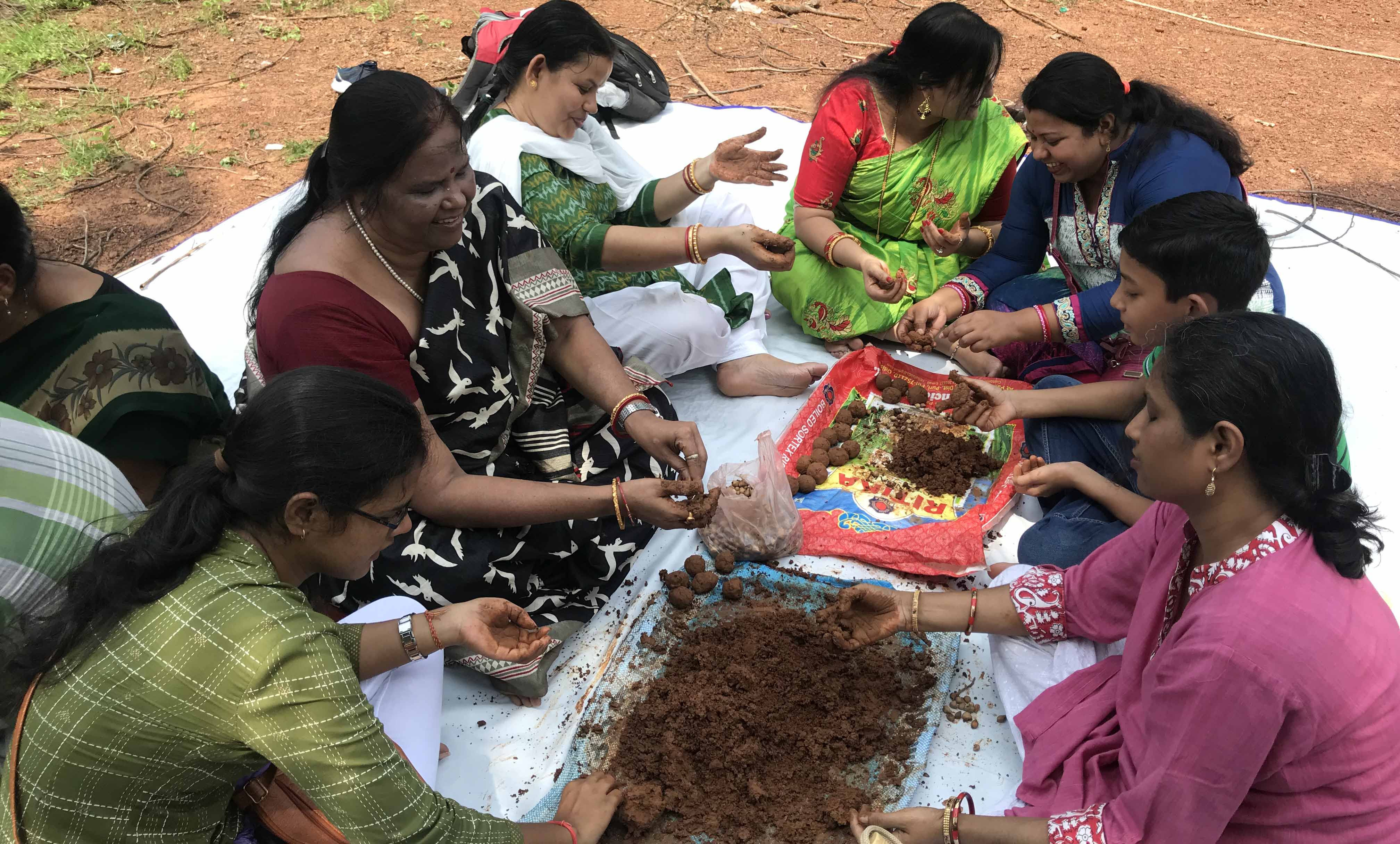
Dharmendra elaborates on the process of making seed balls. “Seed balls consist of a mixture of red soil, cow dung and other bio compost. The semi solid mix is prepared by adding a little water proportionate to the quantity of mixture after which a plant seed is placed in it. These semi soft seed balls are dried in the sun and stored to be used later. Charcoal powder can be mixed with soil and made into small balls. The clay maintains the moisture in seeds till they germinate. The compost nourishes them, and they grow implanting themselves in the soil. Generally, the seeds of karanja, neem, jamu, tamarind, bel and dates are used in the balls. These seed balls are thrown on barren lands so that they grow into trees in due course absorbing the rainwater. When we plant a sapling, it needs watering and protection from grazing cattle. The survival of the plant is not guaranteed, whereas in the case of a seed ball, the chances of survival are more than 50 per cent.”
Throwing of seed balls is in full swing in every district and credit goes to Dharmendra who has plans in place to toss one crore such balls in Odisha. He says, “I was surprised to know that Odisha recorded the highest number of lightning strikes in the country every monsoon. It happens due to lack of green cover. When I organised the workshop in Bhubaneswar, we prepared 30,000 seed balls. We used them all and, in fact, within a month, our members tossed more than 50,000 seed balls across the state. If everything goes as per plan, we will toss one crore seed balls in the next one year.”
Nature lover Sushant Sahoo is also actively popularising the seed ball concept in Bhubaneswar. Dharmendra launched the seed ball drive in August while Sushant started it much earlier in December 2018.
Describing how he learnt about the seed ball concept, Sushant says, “I have heard from my grandparents that their forefathers used to follow the seed ball method to maintain the ecosystem. While surfing the Internet to find ways to preserve greenery, I came to know about the seed ball method and how it is being implemented in other states to restore greenery. From the Internet, I also learnt that although the seed ball technique is an ancient one, it was rediscovered by Masanobu Fukuoka, pioneer of natural farming in Japan.”
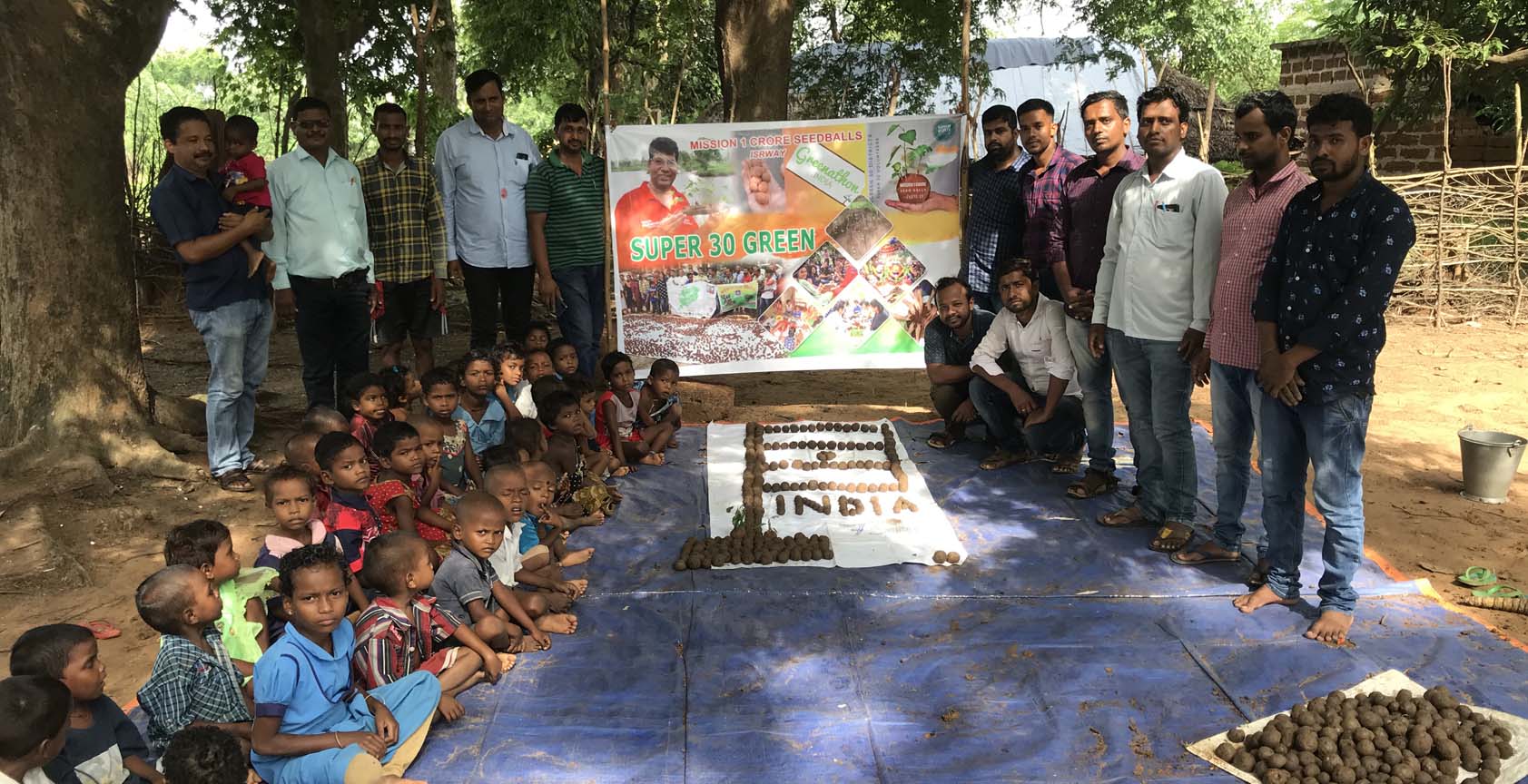
After extensive research, Sushant made up his mind to launch a seed ball drive in Bhubaneswar. He says, “Chances of survival of a plant generated from a seed ball is more than a planted sapling as it is protected from pests like rodents and squirrels. Most importantly, one can toss seed balls in inaccessible pockets.”
Sushant, who tossed seed balls in the Chandaka forest reserve, shares his experience: “I took some kids from Chitrasala, an art institution, along with me to toss seed balls in the Chandaka forest. I wanted to inculcate the idea of afforestation in them. I also taught them the process of making seed balls. The thinning Chandaka forest was my thrust area as the wild animals often head towards the city in search of food. In the second phase, I covered the Bharatpur Reserve Forest and Bhangakata forest.”
This Ganesh Puja, Sushant also made idols and inserted seeds in them so that after their immersion in temporary water bodies, the seeds can grow into trees.
Sushant engaged visually-impaired and tribal kids in his project. “They were very interested in the work. They loved making as well as throwing the seed balls. I also engaged residents of Kandalei hamlet, just 15 km from the state capital. The place has no electricity, road connectivity or school, and its 35 tribal families seem ages away from the modern world.”
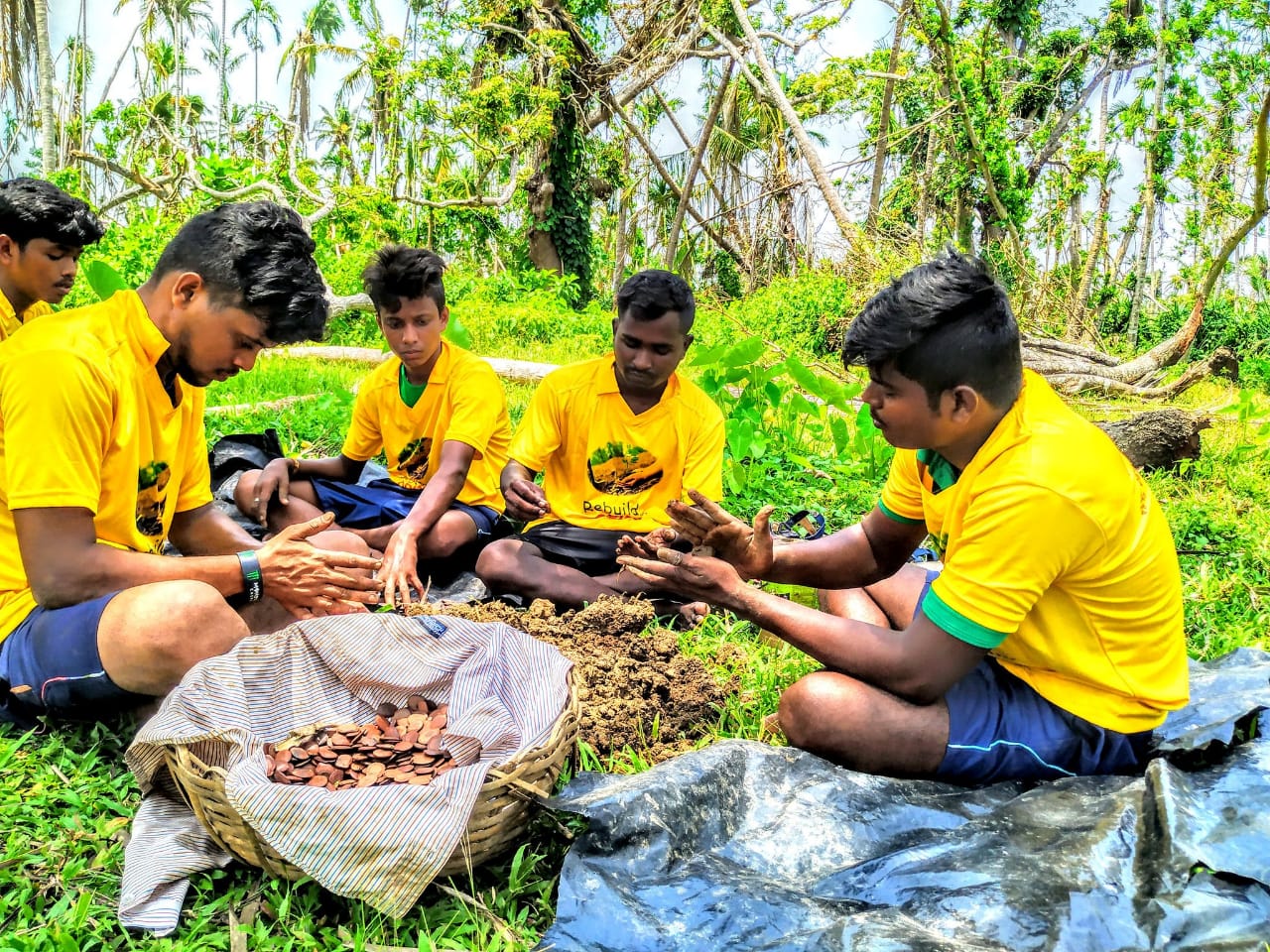
Sushant says seed balls cost less than the cost of planting saplings. “Each seed ball costs just a rupee and another one rupee to get throwers. On the other hand, each sapling needs maintenance of Rs 2,000 to Rs 5,000 for two years including watering and protection,” he explains.
About the difficulties he has faced in his endeavour, Sushant says, “Though seed ball making is a time-consuming process, I love doing it. However, I have faced difficulties in making enough seed balls due to shortage of mud and compost in Bhubaneswar. I have made 5,000 seed balls so far. More seed balls are definitely the need of the hour.”
Soumya Ranjan Biswal, who has been working aggressively to restore Puri’s green cover, has sought the help of nearly 400 village women for his seed ball project. He says, “Planting saplings requires both money and manpower. It becomes a success if planted in a fenced area. There is no such limitation in the case of seed balls. It’s a long-term process and may take about five years to show initial results, but it’s effective in creating patches of greenery.”
Soumya, who has prepared about one lakh seed balls and tossed them in and around Puri, wants to create a green fence along the coast and bring back the green cover in cyclone-hit regions. “Seed ball throwing has many benefits. It turns dry soil into a green field, combats pollution, prevents soil erosion and increases groundwater level. So, I would like to request every resident of our state to transform and rejuvenate dry lands into lush green ecosystems using the seed ball technique,” he says.
RASHMI REKHA DAS, OP

